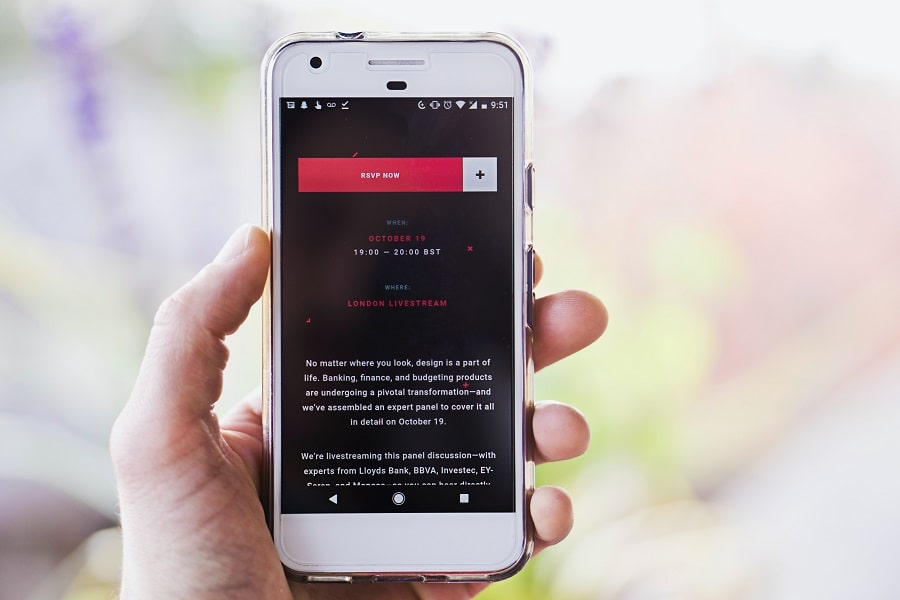11 Jul

Providing your target audience with a personalized experience every time they interact with your brand is important in today’s highly competitive market. This is because customers are used to getting what they want whenever they want, so they are more likely to support brands that can address their specific needs.
To gain the loyalty of your target audience, you should strive to give them personalized content each time you send them an email. However, manually personalizing your emails for each of your subscribers is a challenging, if not impossible, task. That’s why email marketers rely on dynamic content when it comes to the personalization of their email.
Dynamic Content: A Definition
You might have heard of the term before but what is dynamic content in email marketing exactly? Dynamic email content refers to any part of an email that has been personalized based on the behavior or data of the users it is being sent to. It is called dynamic because any part of the email can be set to automatically change depending on the recipient’s:
Demographics
You can customize the emails you send to your subscribers using basic demographics. Through this, you can choose what kind of content an individual receives based on their:
- Gender
- Age
- Location
- Marital status
- Education level
- Occupation
Psychographics
Aside from customizing your emails based on your subscriber’s basic information, you can delve a little deeper and personalize your content using their psychographics. This customization option focuses on a customer’s beliefs, values, and interests.
Based on your business’s nature and goals, you can make dynamic content that fits your target audience’s hobbies, food preferences, and political views. There are many ways to gather your customers’ psychographics, and you can be as creative as you want with your data collection. Most email marketers use email surveys, quizzes, or customer interviews to learn more about their subscribers’ psychographic data.
Subscriber Preferences
Another common customization option email marketers use when creating dynamic content is their subscribers’ preferences. They accomplish this by letting their target audience choose the content type they want to receive from the brand. By doing so, customers can choose not to receive promotions and offers on products and services that are not relevant to them.
To give your subscribers a chance to edit their preferences, you can provide the options when they sign up for your email marketing list. You can also add a link at the bottom of your emails that leads to a preference center where your customers can tweak their choices anytime.
Behavioral Data
This customization option varies from the rest. Instead of customizing your emails based on a subscriber’s characteristics and preferences, you can use their past behaviors and actions to do so, particularly their purchasing history, email engagement, and website activity.
By customizing your emails based on a customer’s behavioral data, you can encourage them to do more positive brand actions. You can use different elements in your emails to influence them in repeating the actions they’ve done before. If you do this successfully, you can boost your email engagement and even improve your sales.

Types of Dynamic Email Content
Now that you’ve learned about what dynamic email content is, you should know about its different types. These are the different elements in your email that you can customize to make it more relevant to your target audience:
Text
You must be familiar with the phrase “content is king.” This is true for email marketing as well. If you work on the content of your emails, you can easily gain new loyal customers who are willing to support your brand for several years.
Email marketers who are new to creating dynamic content typically start by customizing the text of their emails. It is the simplest way of personalizing your emails no matter if you’re sending them to subscribers with different interests or preferences.
For example, if you’re selling makeup products, you can customize a paragraph in your newsletter. You can write content that will speak to buyers who are more likely to purchase lipstick and create another paragraph for customers who are more inclined to buy eyeshadow palettes.
Visuals
Images, videos, GIFs, and other graphic elements make your email content more appealing to readers. That is why most email blasts contain at least one eye-catching visual element.
Through dynamic content, email marketers can also customize the visuals their subscribers receive. This strategy allows you to add any image, video, or graphic element that will resonate with each of your target audience. Choosing the right visual for your email may even help you evoke an emotional reaction from your audience, which can then encourage them to engage with your content.
Calls to Action
Your email’s call to action should be catchy and relevant to the content if you want to entice your customers to take action. It can also improve your click-through rate and increase your sales. However, finding the perfect CTA that resonates with each of your subscribers can be difficult.
To address this problem, you can customize the CTA buttons your subscribers can see. You can set the CTA button included in the email they receive to reflect their current need or their preferences.

How Dynamic Content Works
Using dynamic content for email marketing is a great way of personalizing the content that your subscribers receive. However, the customizable content blocks in your template should be created carefully to ensure seamless execution. Here’s how email marketers do it:
Collect Data
Before delving into the customization of your email, you should first collect data from your customers. When doing so, you should at least gather information regarding the four customization options discussed above. These pieces of information will allow you to gain enough insight into your customers’ characteristics and preferences, which you can use in customizing your emails.
To collect better customer data, you can utilize the following methods:
- Customer interviews – Learn about your customers’ expectations from your brand by speaking directly to them. Interviewing your target audience will also help you learn more about their personal preferences and behaviors.
- Customer feedback – Another great way of learning about the outcomes your customers want from your brand is by asking them for feedback. You can do this through website live chats, surveys, quizzes, or your sales CRM.
- Community research – You can gain insights into your customers’ behavior and preferences by looking at larger communities and platforms to which they belong. To gain relevant information, you can rely on aggregated review data, social listening, and console keyword search.
Create Customer Personas
Once you have gathered enough data on your target audience, you should proceed by creating your customer personas. These are archetypes that represent the main characteristics of one set of your customers. You will often have to create several customer personas to have better customer segmentation.
When making your customer personas, be sure to always consult the data you’ve collected. Doing so will allow you to create personas that accurately represent the different groups that make up your subscriber list. On the other hand, failing to do so might cause you to create irrelevant content that your audience will not appreciate.
Update Subscriber Profiles
There is a high chance that some of your current subscribers do not fit into the customer personas you’ve created. This may become a huge problem if not addressed immediately because these uncategorized subscribers may not receive any relevant content and may even be pushed to unsubscribe from your email list.
To avoid losing readers, you should encourage them to update their profiles. You can do this by sending them an email with a link where they can update the profiles they made when they first subscribed or registered to your mailing list. You can also update your customers’ profiles on your database by looking into their online behavior to learn more about them.
Create Your Dynamic Email
Once you have your customer personas all set up, it’s time to customize your email. Through dynamic content, you have limitless ways of targeting your audience based on their behaviors, characteristics, and preferences.
You can start by creating different content for every part of your email template. Make sure to use your customer personas as a reference when creating your texts, visuals, or CTAs to ensure that each one corresponds with the personas’ unique traits.
When you have completed the content that will occupy the content blocks in your email, you can begin creating personalized emails for your target audience. You can decide when a set of content will appear based on the recipient’s assigned persona.
Measure Your Success
After sending out your first batch of customized emails, you should measure how well it’s being received by your subscribers. You can do this by looking at the clickthrough rates of your dynamic content blocks and analyzing your emails’ heatmaps.
If you notice that your dynamic content is not providing the results you’re looking for, you can always make changes to your strategy. You can even try out different types of dynamic content to understand your customers’ engagement rate better.
Benefits of Using Dynamic Content in Your Emails
Taking advantage of dynamic content to personalize the emails you send to your subscribers can provide you with various benefits. Some of the major ones are:
Better Customer Experience
Customers appreciate it when they know you’re putting their needs first. With dynamic email content, you can easily address any of your audience’s needs and preferences and greatly improve their customer experience.
You can do this by personalizing the content of your email and highlighting elements that pertain to a reader’s specific location, interest, or purchasing history. For example, you operate an online clothing store. You might want to advertise different types of clothing for people in different locations. So, you should promote tank tops and shorts to people living in tropical countries while advertising coats and jackets to customers living in places with colder climates.
Save Time
Taking advantage of dynamic content can help you create a personalized experience for your customers without spending too much time. This way, your team members can accomplish other major tasks while still providing customized content to your readers.
With dynamic email content, your team members won’t have to manually create content that will suit each customer’s behavior and preferences. Instead, they can make a single template and automatically switch out portions of it to match a customer persona.
Boost Engagement
People like to interact more with content that resonates with their needs. This is because they are more likely to trust a brand that listens to their requirements and strives to address each one.
So, if you send relevant emails to your subscribers through dynamic email content, you will notice more engagement for your brand. This may also mean an increase in your brand awareness and sales.
Take Advantage of Dynamic Content and Send Personalized Emails to Your Customers
Dynamic content is a powerful tool that can drastically improve your email marketing campaign. When done right, dynamic content can set your emails apart from your competitors and make them more likely to be noticed by your target audience. After a while, your efforts in creating customized content for your subscribers will allow you to enjoy more engagement, better brand awareness, and improved sales.